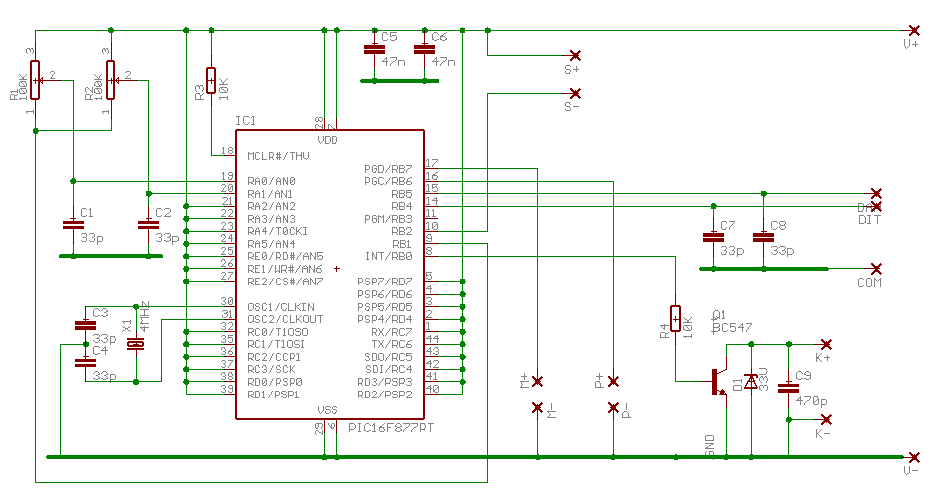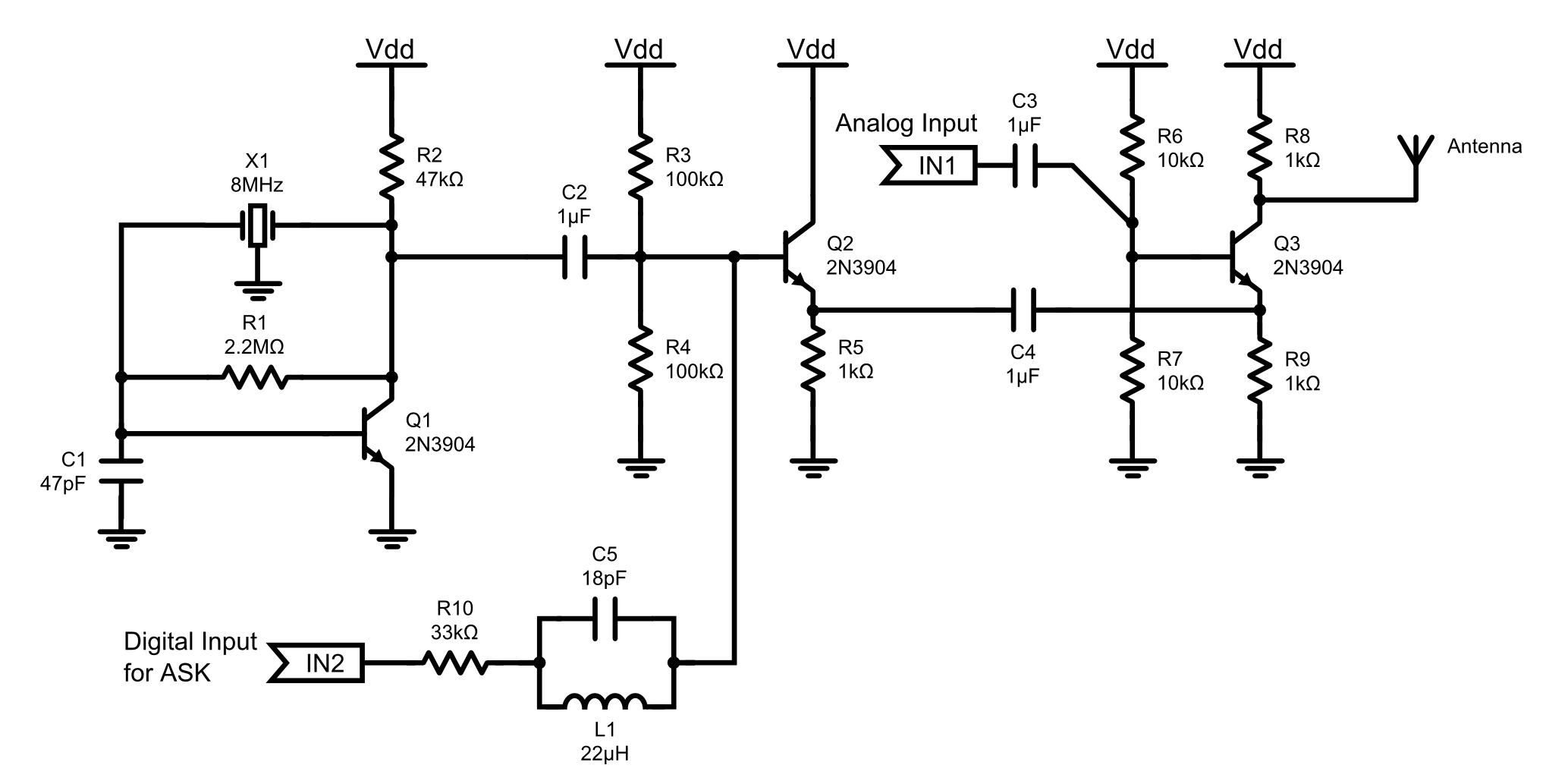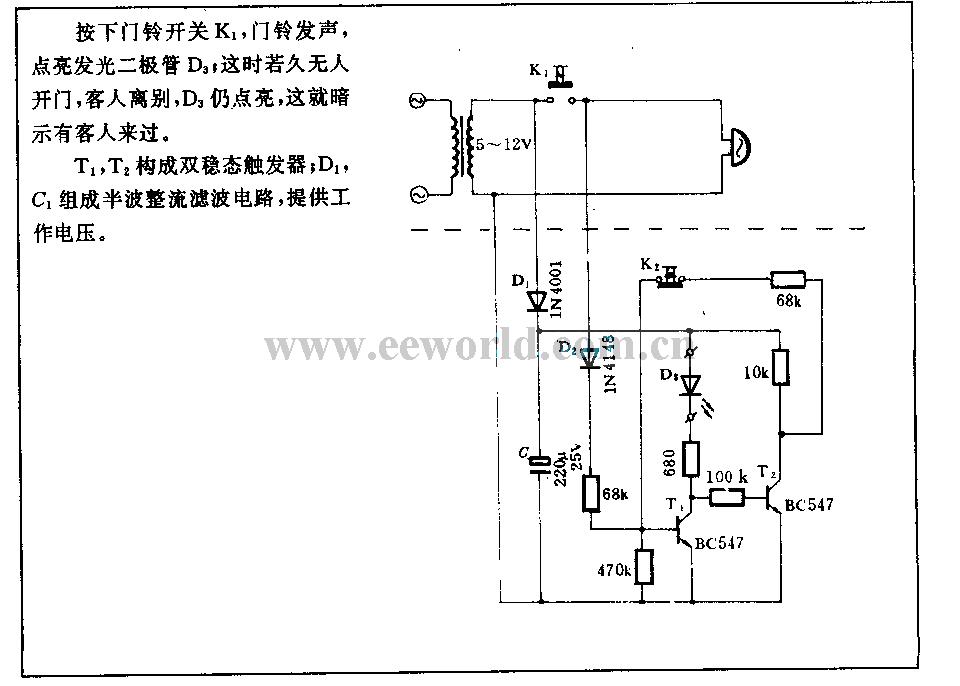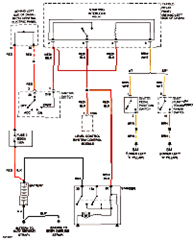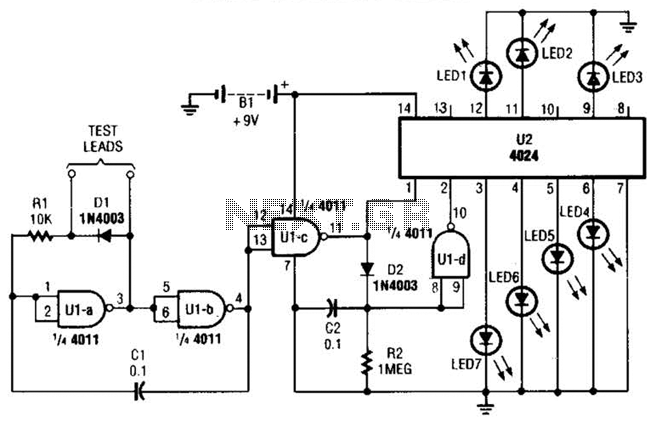
Spark Transmitter Circuit
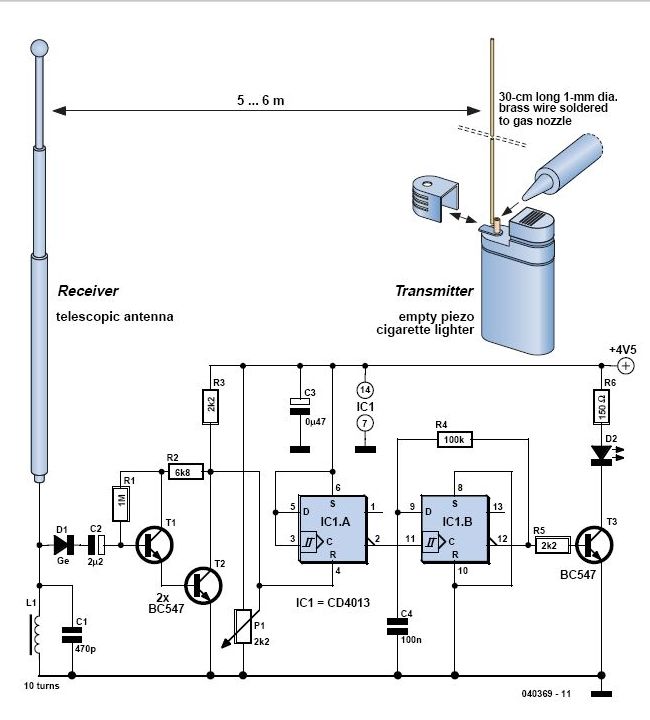
In 1896, Marconi successfully transmitted electromagnetic waves over a distance of approximately 3 kilometers. Shortly thereafter, he established radio communication across water between Lavernock Point in South Wales and Flat Holm Island. The transmitter utilized a spark inductor connected to a dipole antenna. On the receiving end, another dipole antenna was employed along with a glass tube filled with silver and nickel filings, referred to as a coherer. The filings allowed the coherer to function as a defined poor contact, with the RF pulse energy causing the contact to rattle, thereby activating the audio amplifiers connected to the output. The circuit described here operates on a similar principle. While it does not achieve the same range as Marconi's extensive radio equipment, it avoids the need to file down the family's silverware. The transmitter is constructed from an empty disposable cigarette lighter equipped with a piezo spark mechanism. A 30-centimeter long, 1-millimeter diameter (20 SWG) solid brass wire is soldered to the gas nozzle of the lighter, serving as an antenna. When the spark button is activated, the antenna briefly emits electromagnetic energy in the VHF FM frequency range. This effect can be easily verified by bringing the transmitter close to an FM radio while activating it. In contrast to the primitive transmitter, the receiver employs a modern design utilizing all solid-state electronics. A telescopic antenna captures the RF energy from the transmitter and feeds it into a resonant circuit composed of an inductor and a capacitor. A Germanium diode (AAxxx or OAxx) rectifies the electrical signal, which is then amplified by a Darlington stage. The collector of the second transistor induces voltage variations at pin 4 of the bistable (flip-flop) IC type 4013. The sensitivity of the receiver can be adjusted using a preset resistor (P1). Each time the transmitter generates a spark, the flip-flop toggles, switching the LED on or off. As an alternative circuit variation, a relay can be used instead of an LED, enabling the control of lamps, televisions, motors, or actuators through the basic spark transmitter. This project is sure to impress peers.
The described circuit presents a straightforward yet effective implementation of early radio communication principles, adapted for modern use. The transmitter, utilizing a piezoelectric spark mechanism, generates high-frequency electromagnetic waves when activated. The soldered brass wire acts as an antenna, efficiently radiating the generated RF energy. This simplicity in design allows for easy construction and experimentation.
The receiver's architecture employs solid-state components, enhancing reliability and performance compared to historical counterparts. The telescopic antenna is designed to maximize reception of the RF signals, while the resonant circuit ensures that the desired frequency is selectively amplified. The use of a Germanium diode for rectification is notable, as it provides low forward voltage drop, thus improving efficiency in signal processing.
The amplification stage, utilizing a Darlington configuration, enables significant signal enhancement, ensuring that even weak RF signals can be detected. The integration of a flip-flop IC allows for digital control, providing a clear on/off indication via the LED. This feature can be expanded through the use of a relay, facilitating the operation of various electrical devices, thus broadening the practical applications of the circuit.
Overall, this project not only serves as an educational tool for understanding the fundamentals of radio transmission and reception but also showcases the evolution of electronic circuit design from rudimentary components to contemporary solid-state technology. This hands-on experience can be particularly valuable for those interested in electronics, telecommunications, and the historical development of radio technology.In 1896, Marconi successfully covered a distance of about 3 km using electromagnetic waves. A little later, he established radio contact across water between Lavernock Point, South Wales and Flat Holm Island. The transmitter consisted of a spark inductor coupled to a dipole antenna. At the receiver side, he used another dipole and a glass tube filled with silver and nickel filings, the so-called coherer. The filings enabled the coherer to act as a defined` bad contact with the RF pulse energy rattling` the contact and thus driving the audio amplifiers connected to the output. The circuit shown here operates on he same principle. Admittedly it does not cover the same distance as Marconi`s extensive radio equipment, but then you do not need to start filing away on the family`s silver cutlery!
The transmitter consists of an empty (!) disposable cigarette lighter with a piezo spark mechanism. On the gas nozzle of the empty lighter you solder a 30-cm long, 1-mm diameter (20 SWG) solid brass wire which acts as an antenna. When the spark button is pressed, the antenna briefly radiates electromagnetic energy in the VHF FM frequency band.
The effect is easy to verify by holding the transmitter close to an FM radio and firing` it! Compared with the primitive transmitter, our receiver is a more up to date design realised in all solid-state` electronics. A telescopic antenna picks up the transmitter`s RF energy and applies it to a resonant circuit consisting of an inductor and a capacitor.
The electrical signal is rectified by a Germanium diode (AAxxx or OAxx) and amplified by a darlington stage. The collector of the second transistor causes voltage changes at pin 4 of the bistable (flip-flop) IC type 4013.
The receiver sensitivity can be adjusted using preset P1. Each time the transmitter sparks away, the flip-flop toggles and switches the LED on or off. As a circuit variation, you may want to use a relay instead of a LED to allow lamps, a TV set, motors or actuators to be switched on and off using your primitive` spark transmitter. Your friends will be impressed. 🔗 External reference
The described circuit presents a straightforward yet effective implementation of early radio communication principles, adapted for modern use. The transmitter, utilizing a piezoelectric spark mechanism, generates high-frequency electromagnetic waves when activated. The soldered brass wire acts as an antenna, efficiently radiating the generated RF energy. This simplicity in design allows for easy construction and experimentation.
The receiver's architecture employs solid-state components, enhancing reliability and performance compared to historical counterparts. The telescopic antenna is designed to maximize reception of the RF signals, while the resonant circuit ensures that the desired frequency is selectively amplified. The use of a Germanium diode for rectification is notable, as it provides low forward voltage drop, thus improving efficiency in signal processing.
The amplification stage, utilizing a Darlington configuration, enables significant signal enhancement, ensuring that even weak RF signals can be detected. The integration of a flip-flop IC allows for digital control, providing a clear on/off indication via the LED. This feature can be expanded through the use of a relay, facilitating the operation of various electrical devices, thus broadening the practical applications of the circuit.
Overall, this project not only serves as an educational tool for understanding the fundamentals of radio transmission and reception but also showcases the evolution of electronic circuit design from rudimentary components to contemporary solid-state technology. This hands-on experience can be particularly valuable for those interested in electronics, telecommunications, and the historical development of radio technology.In 1896, Marconi successfully covered a distance of about 3 km using electromagnetic waves. A little later, he established radio contact across water between Lavernock Point, South Wales and Flat Holm Island. The transmitter consisted of a spark inductor coupled to a dipole antenna. At the receiver side, he used another dipole and a glass tube filled with silver and nickel filings, the so-called coherer. The filings enabled the coherer to act as a defined` bad contact with the RF pulse energy rattling` the contact and thus driving the audio amplifiers connected to the output. The circuit shown here operates on he same principle. Admittedly it does not cover the same distance as Marconi`s extensive radio equipment, but then you do not need to start filing away on the family`s silver cutlery!
The transmitter consists of an empty (!) disposable cigarette lighter with a piezo spark mechanism. On the gas nozzle of the empty lighter you solder a 30-cm long, 1-mm diameter (20 SWG) solid brass wire which acts as an antenna. When the spark button is pressed, the antenna briefly radiates electromagnetic energy in the VHF FM frequency band.
The effect is easy to verify by holding the transmitter close to an FM radio and firing` it! Compared with the primitive transmitter, our receiver is a more up to date design realised in all solid-state` electronics. A telescopic antenna picks up the transmitter`s RF energy and applies it to a resonant circuit consisting of an inductor and a capacitor.
The electrical signal is rectified by a Germanium diode (AAxxx or OAxx) and amplified by a darlington stage. The collector of the second transistor causes voltage changes at pin 4 of the bistable (flip-flop) IC type 4013.
The receiver sensitivity can be adjusted using preset P1. Each time the transmitter sparks away, the flip-flop toggles and switches the LED on or off. As a circuit variation, you may want to use a relay instead of a LED to allow lamps, a TV set, motors or actuators to be switched on and off using your primitive` spark transmitter. Your friends will be impressed. 🔗 External reference
